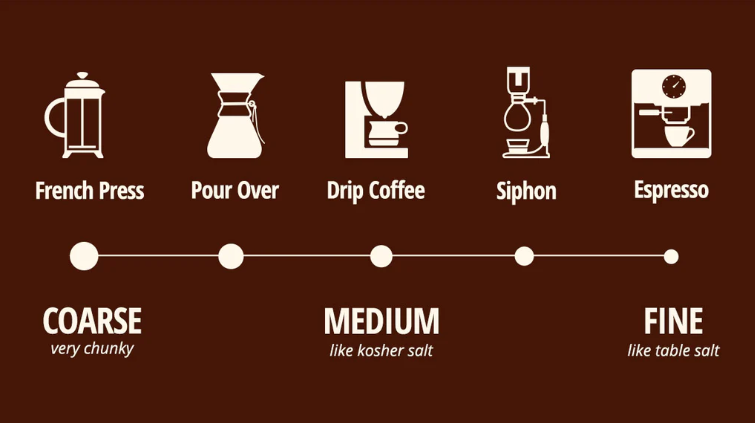
Unveiling the Art of Coffee Grinds: From History to Brewing Perfection
Share
Introduction
Coffee has a long and fascinating history, with its preparation methods evolving over centuries. Among the key components that influence the final cup's taste and aroma is the grind size of the coffee beans. In this blog post, we'll delve into the history of different coffee grinds and explore the best brewing methods for each type, so you can elevate your coffee experience with every sip.
1. Turkish Grind
Historical Anecdote: The Turkish grind dates back to the 16th century, where Turkish coffee was introduced and quickly became an integral part of their culture. The Turkish grind is extraordinarily fine, resembling a soft powder, and this traditional preparation method involves brewing the coffee in a small pot called a cezve or ibrik.
Best Suited for: Turkish grind is ideal for making traditional Turkish coffee, known for its intense flavor and unfiltered nature. It's a full-bodied and strong coffee with a thick texture and rich crema.
Brewing Instructions:
- Empirical Measurements: Use 1 tablespoon of coffee grounds for every 3 ounces of water.
- Metric Measurements: Use 7 grams of coffee grounds for every 90 milliliters of water.
2. Espresso Grind
Historical Anecdote: Espresso, a concentrated coffee brewed by forcing hot water through finely-ground coffee beans, originated in Italy during the early 20th century. The Espresso grind, finer than table salt, is essential for creating the signature shot of espresso.
Best Suited for: As the name suggests, the Espresso grind is perfect for brewing espresso. The fine grind allows for optimal extraction in a short amount of time, producing a bold and intense flavor with a layer of crema on top.
Brewing Instructions:
- Empirical Measurements: Use 18-20 grams of coffee grounds for a double shot (about 2 ounces) of espresso.
- Metric Measurements: Use 18-20 grams of coffee grounds for approximately 60 milliliters of espresso.
3. Medium Grind
Historical Anecdote: The medium grind is a versatile option that emerged during the 19th century when various brewing methods started to gain popularity across Europe and America.
Best Suited for: This grind works well with a wide range of brewing methods, including drip coffee makers, pour-over, and certain espresso machines. It offers a balanced flavor profile, making it suitable for those who prefer a milder yet flavorful cup.
Brewing Instructions:
- Empirical Measurements: Use 1 to 1.5 tablespoons of coffee grounds for every 6 ounces of water.
- Metric Measurements: Use 10-15 grams of coffee grounds for approximately 180 milliliters of water.
4. Coarse Grind
Historical Anecdote: The coarse grind has its roots in ancient coffee brewing methods that involved boiling coffee grounds directly in water. It later gained popularity with French press brewing in the 19th century.
Best Suited for: French press or plunger pot brewing methods benefit from the coarse grind. The larger particles allow for slower extraction and easier separation during pressing, resulting in a robust and flavorful cup.
Brewing Instructions:
- Empirical Measurements: Use 1 to 1.5 tablespoons of coffee grounds for every 8 ounces of water.
- Metric Measurements: Use 10-15 grams of coffee grounds for approximately 240 milliliters of water.
Conclusion
The journey of coffee grinds from the ancient times of Turkish coffee to the modern-day espresso shots has been a captivating one. Understanding the history and best brewing methods for each grind size can elevate your coffee experience, allowing you to savor every unique flavor profile.
At Blonde Bastard Coffee Roasters, we encourage you to experiment with different coffee grinds and brewing methods, discovering your perfect cup of coffee. Embrace the rich history and diverse range of possibilities that coffee grinds offer, and embark on a delightful coffee journey like no other.
